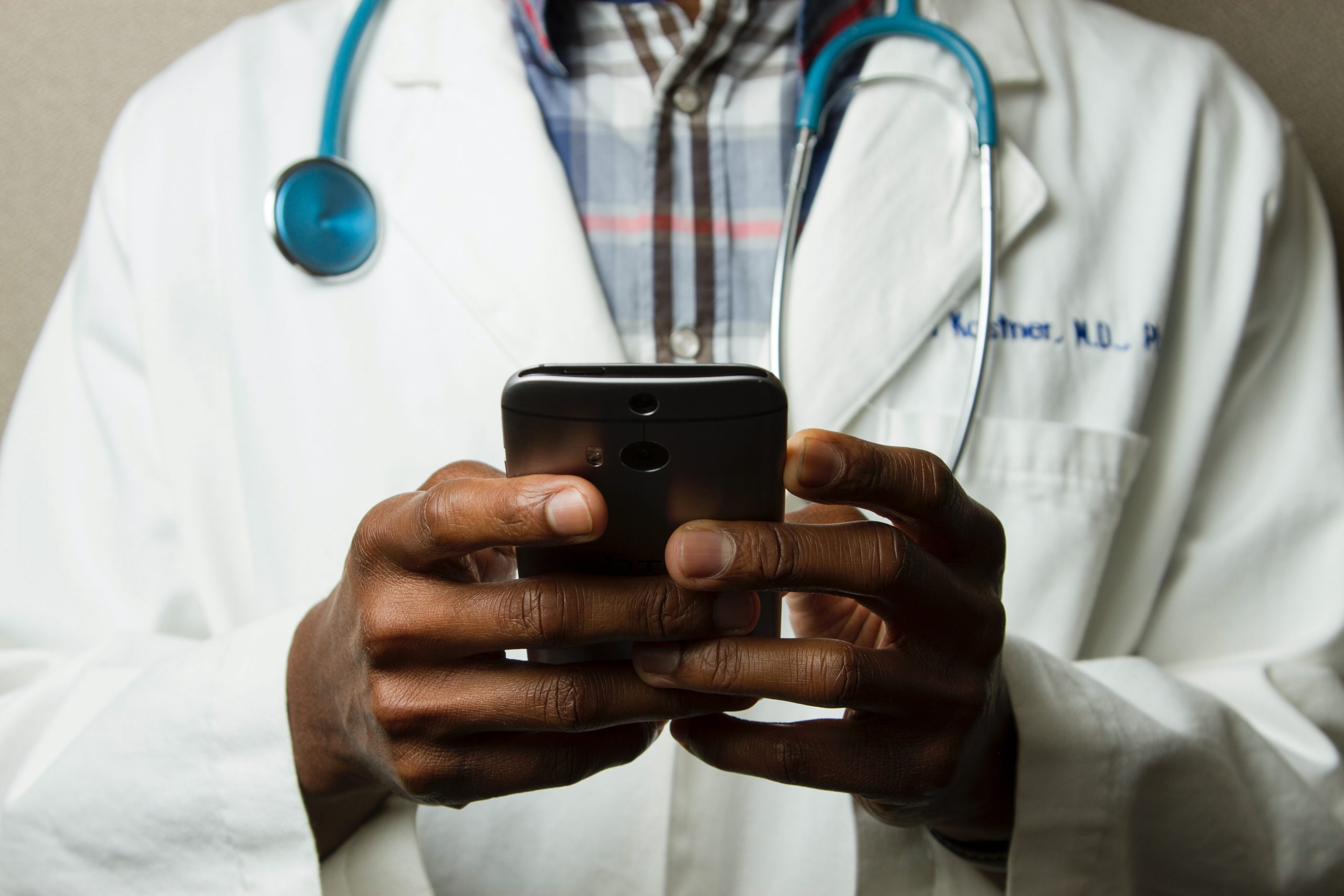In today’s digital age, telehealth mobile apps have revolutionized the way healthcare is delivered. With just a few taps on a smartphone, patients can now consult with doctors, schedule appointments, and even monitor their vitals from the comfort of their own homes. If you’re considering developing a telehealth app, you’re on the right track to meet the growing demand for convenient and accessible healthcare services. In this article, we will guide you through the process of developing a telehealth app, covering everything from understanding the basics of telehealth to launching and maintaining your app.
Understanding Telehealth Apps
Telehealth, also known as telemedicine, refers to the use of technology to deliver healthcare services remotely. It enables healthcare professionals to diagnose, treat, and monitor patients using video conferencing, secure messaging, and other digital tools. Telehealth apps bridge the gap between doctors and patients, making healthcare more accessible and convenient for everyone.
With the advancement of technology, telehealth has revolutionized the way healthcare is delivered. Gone are the days when patients had to travel long distances or wait for hours in a crowded waiting room to see a doctor. Telehealth apps have made it possible for patients to receive medical care from the comfort of their own homes, reducing travel time and expenses.
These apps offer a wide range of features that enhance the telehealth experience. Virtual consultations, for example, allow patients to connect with healthcare providers through video calls. This not only saves time but also provides a more personalized and convenient healthcare experience. Patients can discuss their symptoms, ask questions, and receive expert medical advice without leaving their homes.
Appointment scheduling is another key feature of telehealth apps. Patients can easily book appointments with healthcare providers at their preferred time and date, eliminating the need for long waiting periods. This feature ensures that patients receive timely medical care, reducing the risk of their conditions worsening.
Access to medical records is also made easier through telehealth apps. Patients can securely access their medical history, test results, and prescriptions from their smartphones. This eliminates the need to carry physical copies of medical records and allows healthcare providers to make informed decisions about patient care.
Furthermore, telehealth apps provide a platform for remote monitoring of patients. Healthcare professionals can remotely track vital signs, such as blood pressure and heart rate, using connected devices. This enables early detection of any abnormalities and allows for timely intervention, reducing the risk of complications.
In addition to the convenience it offers, telehealth also plays a significant role in improving healthcare access for underserved populations. Rural areas, for example, often face challenges in accessing quality healthcare due to limited healthcare facilities and long travel distances. Telehealth apps help bridge this gap by connecting patients in remote areas with healthcare providers, ensuring they receive the care they need.
Overall, telehealth apps have transformed the healthcare landscape by making healthcare more accessible, convenient, and efficient. With their user-friendly interfaces and comprehensive features, these apps have revolutionized the way healthcare is delivered, benefiting both patients and healthcare providers.
Pre-Development Considerations for a Telehealth App
Identifying Your Target Audience
Before diving into app development, it’s important to identify your target audience. Who are the primary users of your app? Is it designed for patients, doctors, or both? Understanding your target audience will help you tailor the app’s features and user experience to meet their specific needs. Conduct market research and gather user feedback to gain valuable insights into your target audience’s preferences and expectations.
For example, if your target audience consists of patients, you may want to focus on creating a user-friendly interface that allows them to easily schedule appointments, access medical records, and communicate with healthcare providers. On the other hand, if your app is primarily for doctors, you might want to prioritize features such as teleconferencing capabilities, secure messaging, and access to clinical resources.
Additionally, it’s important to consider the demographics of your target audience. Are they predominantly older adults who may require larger font sizes and simpler navigation? Or are they tech-savvy millennials who expect a sleek and modern design? By understanding the characteristics and preferences of your target audience, you can create an app that resonates with them and meets their unique needs.
Regulatory Compliance and Privacy Concerns
Compliance with regulations and protecting patient privacy are paramount in healthcare app development. We at Wesoftyou, a software development company with a proven track record in healthcare app development, understand the importance of addressing these concerns.
When developing a telehealth app, it’s crucial to adhere to regulations such as HIPAA (Health Insurance Portability and Accountability Act) to ensure the security and confidentiality of patient information. This means implementing robust security measures, such as encryption and secure data storage, to protect sensitive data from unauthorized access.
In addition to HIPAA compliance, you may also need to consider other regulations specific to your target audience’s location. Different countries and regions may have their own data protection laws and privacy regulations that you need to comply with. It’s essential to thoroughly research and understand these requirements to avoid any legal issues down the line.
Obtaining necessary certifications, such as HITRUST (Health Information Trust Alliance) certification, can further demonstrate your commitment to data security and compliance. These certifications provide reassurance to users that their personal health information is being handled with the utmost care and in accordance with industry standards.
Furthermore, it’s important to educate your users about the privacy measures you have implemented in your app. Clearly communicate how their data will be used, stored, and protected. This transparency will help build trust among your users and encourage them to engage with your app confidently.
In conclusion, when developing a telehealth app, it’s crucial to identify your target audience and tailor the app’s features and user experience to meet their specific needs. Additionally, compliance with regulations such as HIPAA and addressing privacy concerns are essential to ensure the security and confidentiality of patient information. By considering these pre-development considerations, you can create a telehealth app that not only meets the needs of your users but also instills confidence in their data privacy and security.
Key Features of a Successful Telehealth App

User-Friendly Interface
A user-friendly interface is essential for a successful telehealth app. Patients should be able to navigate the app easily, schedule appointments, and communicate with healthcare providers without any hassle. A well-designed and intuitive interface will enhance user satisfaction and encourage regular usage of your app.
Imagine a telehealth app that not only allows patients to schedule appointments but also provides them with a personalized dashboard. This dashboard would display their upcoming appointments, recent consultations, and even recommendations for healthy habits based on their medical history. With just a few taps, patients can access their medical records, view test results, and even track their progress towards achieving their health goals. Such a comprehensive and user-friendly interface would truly revolutionize the way patients engage with their healthcare providers.
Secure Communication Channels
The security of patient-doctor communication is of utmost importance in telehealth apps. Implementing end-to-end encryption and secure messaging channels will ensure that sensitive medical information remains private and confidential. We at Wesoftyou prioritize the security of our healthcare app solutions and can provide you with robust encryption protocols to guarantee secure communication between patients and healthcare providers.
Not only should the telehealth app offer secure messaging, but it should also provide additional features to facilitate seamless communication. Imagine a telehealth app that allows patients to send images of their symptoms directly to their healthcare providers. This would enable doctors to visually assess the situation and provide accurate diagnoses. Furthermore, the app could support video consultations, allowing patients to have face-to-face interactions with their doctors from the comfort of their own homes. By incorporating these advanced communication features, your telehealth app will truly stand out in the market.
Appointment Scheduling and Reminders
Effective appointment scheduling and reminders are critical features of a telehealth app. Patients should be able to book appointments with ease and receive notifications/reminders for upcoming consultations or prescription refills. Streamlining the appointment process will improve patient engagement and reduce no-show rates.
Imagine a telehealth app that not only allows patients to schedule appointments but also provides them with smart suggestions for available time slots based on their preferences and the availability of healthcare providers. The app could even integrate with the patient’s calendar, automatically adding the appointment and sending reminders. Additionally, the app could provide real-time updates on the estimated waiting time for virtual consultations, ensuring that patients are informed and prepared for their appointments. By incorporating these convenient features, your telehealth app will become an indispensable tool for patients seeking quality healthcare services.
The Development Process of a Telehealth App
Developing a telehealth app requires careful planning and execution. In this article, we will explore the various stages involved in the development process and provide insights into each step.
Choosing the Right Development Platform
Choosing the right development platform is essential to ensure the success of your telehealth app. Consider factors such as user base, scalability, and integration capabilities when selecting a platform. Native or cross-platform development frameworks, such as React Native or Flutter, offer the flexibility to deliver a high-quality app across iOS and Android platforms.
Furthermore, it is crucial to assess the security measures provided by the development platform. Telehealth apps deal with sensitive patient information, and ensuring data privacy and protection is of utmost importance.
Additionally, consider the availability of third-party integrations and APIs that can enhance the functionality of your app. Integration with electronic health record (EHR) systems, for example, can streamline the process of accessing and managing patient data.
Designing the User Interface
The user interface (UI) design of your telehealth app should be visually appealing, intuitive, and aligned with your brand image. Collaborate with experienced UI/UX designers to create a design that reflects your app’s purpose and meets your target audience’s expectations.
During the design phase, it is crucial to prioritize the user experience (UX) of your app. Incorporating patient-centric design elements, such as large fonts and clear navigation menus, can enhance the usability and accessibility of your app. Conducting user testing and gathering feedback can help identify areas for improvement and ensure a seamless user experience.
Furthermore, consider incorporating features that promote engagement and interactivity. For example, integrating features like appointment reminders, medication trackers, and personalized health tips can enhance user engagement and encourage continued usage of the app.
Implementing Key Features
Once the UI design is finalized, it’s time to implement the key features of your telehealth app. This includes integrating video conferencing capabilities, secure messaging, patient data management, and electronic health record (EHR) systems.
When it comes to video conferencing, prioritize seamless connectivity and high-quality audio and video. Consider using reliable and secure video conferencing APIs to ensure a smooth and uninterrupted telehealth experience for both patients and healthcare providers.
Secure messaging is another crucial feature to implement. Enable real-time communication between patients and healthcare providers while ensuring data privacy and encryption. Implement features such as read receipts, file attachments, and message archiving to enhance the functionality of the messaging system.
Integrating patient data management and EHR systems is essential for seamless access to patient records and medical history. Ensure that the app complies with relevant data protection regulations and follows industry best practices for data security.
Collaborate closely with experienced developers who specialize in telehealth app development to ensure smooth integration of these features. Regular testing and quality assurance processes should be in place to identify and fix any bugs or issues that may arise during development.
In conclusion, developing a telehealth app requires careful consideration of the development platform, thoughtful UI design, and seamless integration of key features. By following a systematic approach and working with experienced professionals, you can create a telehealth app that provides a convenient and secure healthcare experience for patients.
Testing and Launching Your Telehealth App
When it comes to developing a telehealth app, thorough testing is of utmost importance. It ensures that the app provides a seamless user experience and functions flawlessly. By performing rigorous testing, you can identify and fix any bugs, security vulnerabilities, or compatibility issues that may arise.
One crucial aspect of testing is conducting user acceptance testing (UAT). This involves gathering feedback from beta testers who represent your target audience. Their input can help you make necessary improvements and enhancements to the app before its official launch.
Moreover, a well-tested app instills confidence in both patients and healthcare providers. Patients will feel more comfortable using an app that has been thoroughly tested and proven to be reliable. Healthcare providers, on the other hand, will trust an app that functions seamlessly and ensures the privacy and security of patient data.
Launching and Marketing Your App
Once your telehealth app has undergone thorough testing and all necessary improvements have been made, it’s time to focus on its launch and marketing. Developing a comprehensive marketing strategy is essential to ensure that your app reaches your target audience effectively.
Social media platforms can be powerful tools for promoting your telehealth app. Utilize platforms such as Facebook, Twitter, and Instagram to create awareness about your app and its benefits. Engage with potential users by sharing informative content, success stories, and testimonials.
In addition to social media, consider collaborating with healthcare institutions to market your app. Partnering with hospitals, clinics, and healthcare organizations can help you reach a wider audience and establish credibility. Offer incentives for healthcare providers to recommend your app to their patients, such as discounts or exclusive features.
Another effective marketing strategy is to promote your app through healthcare publications. Reach out to industry magazines, websites, and blogs to feature your app and its unique features. This can help you gain visibility within the healthcare community and attract potential users.
When marketing your telehealth app, it’s crucial to highlight its benefits. Emphasize the convenience it offers, allowing patients to access healthcare services from the comfort of their own homes. Highlight the availability of specialized doctors who can provide expert advice and consultations. Additionally, emphasize how your app improves access to healthcare, particularly for individuals in remote areas or with limited mobility.
By thoroughly testing your telehealth app and implementing a comprehensive marketing strategy, you can ensure a successful launch and attract a wide user base. Remember, the key is to provide a seamless user experience while effectively communicating the benefits of your app to potential users.
Maintaining and Updating Your Telehealth App
Developing a telehealth app is just the first step in providing convenient and accessible healthcare to your users. To ensure its long-term success, it is crucial to continuously maintain and update your app. This will not only keep up with evolving technology but also meet the ever-changing expectations of your users.
Regular App Updates
Regularly updating your telehealth app is essential in today’s fast-paced digital world. By listening to user feedback and identifying areas for improvement, you can implement updates that enhance the app’s functionality and user experience. These updates also demonstrate your commitment to providing the best possible healthcare experience for your users.
For example, you can introduce new features that make it easier for patients to schedule appointments, access medical records, or communicate with healthcare providers. By staying up-to-date with the latest advancements in telehealth technology, you can ensure that your app remains relevant and competitive in the market.
User Feedback and Continuous Improvement
One of the most valuable resources for improving your telehealth app is user feedback. Encouraging users to provide feedback on their app experience allows you to gain insights into their needs, preferences, and pain points. This feedback can help you identify areas where your app can be enhanced and optimized.
Engaging with users through surveys, ratings, and reviews can provide you with valuable data to guide your app’s continuous improvement. By analyzing this feedback, you can prioritize updates and focus on the features that matter most to your users. This iterative process of listening to user feedback and implementing improvements ensures that your telehealth app remains user-centric and aligned with their expectations.
Additionally, continuous improvement goes beyond just fixing bugs or adding new features. It involves regular performance optimizations, security updates, and compatibility enhancements. By keeping your app up-to-date with the latest industry standards and best practices, you can provide a secure and reliable platform for healthcare delivery.
Partnering with a reliable software development company like Wesoftyou can greatly simplify the process of maintaining and updating your telehealth app. Their expertise in telehealth app development can help you navigate the complexities of the healthcare industry and ensure that your app meets the needs of your target audience.
Whether you’re aiming to streamline appointment scheduling, enhance patient-doctor communication, or improve overall healthcare accessibility, the development of a telehealth app offers endless possibilities. With the right approach to maintenance and updates, you can revolutionize the healthcare industry and make a positive impact on the lives of countless individuals.
Contact us today for a free consultation or project estimation. Let us help you bring your vision of a telehealth app to life and empower people to access healthcare anytime, anywhere.
FAQ
Telehealth, also known as telemedicine, is the use of technology to deliver healthcare services remotely. It enables patients to consult with doctors, schedule appointments, and monitor their health using mobile apps or other digital tools.
Telehealth has revolutionized the way healthcare is delivered, allowing patients to access medical services from the comfort of their own homes. This technology has become increasingly popular, especially in rural areas where access to healthcare facilities may be limited. By leveraging telehealth, patients can receive timely medical advice, diagnosis, and treatment without the need for physical visits to a doctor’s office.
Developing a telehealth app can bring numerous benefits to both healthcare providers and patients. It increases accessibility to healthcare services, reduces the need for in-person appointments, and improves overall patient experience and satisfaction.
With a telehealth app, patients can easily schedule virtual appointments with healthcare professionals, eliminating the need to wait in long queues or travel long distances. This convenience not only saves time but also reduces the risk of exposure to contagious diseases, especially during times of pandemics or outbreaks.
For healthcare providers, a telehealth app allows them to reach a wider patient base and provide medical services beyond the limitations of physical locations. It also streamlines administrative tasks, such as managing appointments, medical records, and billing, leading to increased efficiency and cost savings.
As a software development company with expertise in healthcare app development, WeSoftYou can assist you in all stages of developing a telehealth mobile app. From initial consultation to UI/UX design, development, testing, and maintenance, we have the knowledge and experience to create a high-quality and user-friendly telehealth app tailored to your specific requirements.
Our team of skilled developers and designers understands the unique challenges and requirements of the healthcare industry. We can help you integrate essential features into your telehealth app, such as secure video conferencing, appointment scheduling, electronic medical records, prescription management, and real-time health monitoring.
With our expertise in compliance with healthcare regulations and data security, you can trust us to develop a telehealth app that prioritizes patient privacy and confidentiality. We follow industry best practices and use the latest technologies to ensure that your app meets the highest standards of security and usability.
Contact us today for a free consultation or project estimation. Our team of experts will work closely with you to understand your needs and provide you with the best solution for developing a telehealth app that meets your goals and exceeds user expectations.
During the initial consultation, we will discuss your requirements, target audience, and desired features of the app. Our team will provide you with a detailed project plan, including timelines and cost estimates. Once the development process begins, we will keep you updated on the progress and involve you in decision-making to ensure that the final product aligns with your vision.
At WeSoftYou, we are committed to delivering innovative and reliable telehealth solutions that empower healthcare providers and improve patient outcomes. Let us help you transform the way healthcare is delivered with our cutting-edge telehealth app development services.





















